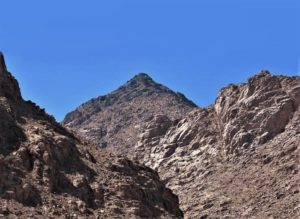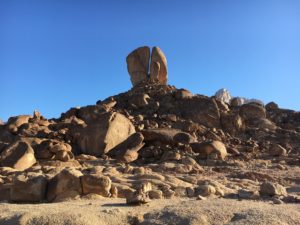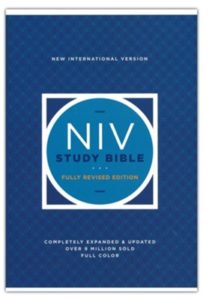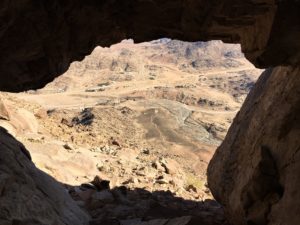NIV Study Bible, Fully Revised Edition
A review by Janice D. Green
This new fully revised edition of the NIV Study Bible is Great! It has so many helpful features for the serious Bible student. I have been enjoying this copy for about a month now.
I received a free copy of this Bible as a member of the Bible Gateway Blogger Grid for the purpose of writing this review. #BibleGatewayPartner
What I Like about the new fully revised NIV Study Bible:
- Charts and diagrams to help organize various kinds of information in the Bible. This is probably my favorite of the features as I’ve been reading with the intention of better organizing these details in my mind so I can better see the whole picture of the biblical accounts. For the past two years I’ve been writing out my own lists of names and genealogies trying to keep them sorted out so I could refer back to them. With this new Bible, these and more have been done in charts that are easy to read and understand.
- Timelines are included at the beginning of each book of the Bible. There is also a five page continuous timeline included at the beginning of the Old Testament and a two-page timeline at the beginning of the New Testament. These timelines include both biblical dates and dates from known world history not mentioned in the Bible.
- Introductions to the books are wonderful. They help ground the reader with a foundation to build on as they read through the passages. A brief example of helpful insights is found in the “Chronology of Jeremiah,” an insert in the introduction of the book of Jeremiah. Since the time of this book parallels the reigns of several kings named in 2 Kings as well as in 2 Chronicles, this chronology helps pull it together by identifying key names and events the reader will recall from the other books. I feel these chronologies are most helpful in the books of the prophets for this same reason.
- Parallel passages with nearly identical wording and/or information are identified with cross references. I’m drawing close to reading 1 Chronicles in this year’s reading schedule and will find this information very useful as I seek to identify the information that is in addition to what I’ve already read in previous books.
- Photographs of places and artifacts are placed throughout the Bible to give the reader a better feel for the people, the land, and the times making for a richer understanding of the text.
- Models of the tabernacle and the various temples that were built are included alongside the passages where they are introduced making it easier to grasp the text that describes them.
- Footnotes are found at the bottom of every page of biblical text with supporting information and facts to help answer questions that may arise. Some footnotes offer alternate translations. There are special symbols this Bible uses to help the reader know the type of information that is included in the footnotes, with symbols for points of archaeology, points for personal application, and character information describing people and/or groups of people.
- Cross references are found in a column down the center of every page of the biblical text leading to passages that include similar words.
- Many articles are inserted that help the reader understand various passages, often giving several interpretations that are given by different theological perspectives. This can be seen as a plus by most provided they are willing to read about viewpoints that differ from their previously held views.
In any study Bible, the commentaries are based on information shared by recognized biblical scholars. Since no one has been able to re-enter history to get a first hand look at what happened, we must decide whether to accept the Biblical accounts as fact or to question them. Many biblical “scholars” fall on both sides of this spectrum. For this reason, any commentary must be seen as somewhat subjective.
Earlier today on this blog I reviewed another Bible I have been reading since January 2020 for my current Bible reading plan. I have very serious issues with that Bible, and have given it the label “The Scoffer’s Bible.” Their biblical “scholars” obviously tend to fall on the side of discounting Scripture over their assumed human wisdom. Those “scholars” seem to go out of their way to point out any perceived discrepancies, even if they have to create their own set of logic to come to their conclusions. I don’t detect much respect for the holiness of God’s Word in that other Bible.
Fortunately, I didn’t find this to be true of this NIV Study Bible. In several instances I saw where they mentioned the opposing point of view; however, they quite consistently pointed out solid reasons why we can still trust the Scriptures to mean what they say. I’ve only had this NIV Study Bible less than a month, but I find it to be a refreshing change from the other “scoffer’s” Bible.
What disappointed me about this NIV Study Bible:
I do have one issue with this Bible that I must in good conscience bring out. They have yet to recognize the recent indisputable evidence that archaeologists have uncovered concerning the location of Mt. Sinai. It has not been included on their maps as even a possible location of Mt. Sinai. The only place where I saw it mentioned was in one of the articles where it saves it for last and gives several reasons why it couldn’t be correct. Unfortunately, their reasons are based on human reasoning and not on the Biblical text nor the blatantly obvious archaeological evidence that Mt. Sinai is indeed located in Saudi Arabia, and not in the Sinai Peninsula.
Archaeologist have no problems stating that there is no archaeological evidence that the Israelites ever inhabited the traditional site of Mt. Sinai. It doesn’t take a rocket scientist to see that there is no way possible that the thousands of Israelites could have camped around that mountain as is described in the Biblical text. How many people to date have concluded that the Old Testament is a book of myths based on this information?
But jealous archaeologists refuse to accept that Ron Wyatt, a less professional archaeologist was able to locate Mt. Sinai. Ron Wyatt was a true student of the Bible. He recognized that the true Mt. Sinai had to be located in Saudi Arabia based on his intense study of the Scriptures. And I totally agree with him.
Before I even heard of Ron Wyatt and his discoveries, I realized that Mt. Sinai couldn’t be located that far away from Midian which is on the east side of the Gulf of Aqaba. I studied the maps as I read about Moses tending his father-in-law’s sheep. Using Google Maps, I found that the two mountains are 222 miles apart if one travels around the north end of the Gulf of Aqaba. Now seriously, did Moses take his sheep 222 miles around the Gulf of Aqaba to get to the “traditional” Mt. Sinai? I think not. See Exodus 3:1-2. See also Exodus 3:12. This isn’t rocket science, it is taking God’s Word to be true and to mean what it says.
Now let’s take a peek at some archaeological evidence. 
This is a photograph of the true Mt. Sinai. The peak is still blackened from when God spoke from this mountain giving the Israelites the Ten Commandments. The rocks are blackened on the top only and the black penetrates through part of individual rocks making them black on top and brown on the bottom. In other words, this isn’t a black strata of rocks, but it is rocks that have been blackened by a powerful fire.
 This is the split rock of Mt. Horeb. It is near Mt. Sinai. The rocks around this structure show obvious signs of water erosion, not like the other rocks in this desert region.
This is the split rock of Mt. Horeb. It is near Mt. Sinai. The rocks around this structure show obvious signs of water erosion, not like the other rocks in this desert region.
.
Many years later, Elijah fled to Mt. Horeb where he stayed in a cave. Is it any wonder that there is also a cave on this mountain? (1 Kings 19:8-9) From this view, the site of the altar where Aaron’s golden calf once stood though I don’t have enough information to pick it out for you in the picture.
I would be remiss if I didn’t also share two videos that I’ve also shared in a fairly recent post on this blog. They give so much more information about this site, the true Mt. Sinai. I am thoroughly convinced that the only reason this site hasn’t yet been accepted by publishers and “Bible scholars” is pride and money. The evidence is here beyond dispute for those with eyes willing to recognize it. This reminds me of how the Jews didn’t/wouldn’t recognize their Messiah when he came.
Another great video with more information about the true Mt. Sinai.



Comments
NIV Study Bible, Fully Revised Edition — No Comments
HTML tags allowed in your comment: <a href="" title=""> <abbr title=""> <acronym title=""> <b> <blockquote cite=""> <cite> <code> <del datetime=""> <em> <i> <q cite=""> <s> <strike> <strong>